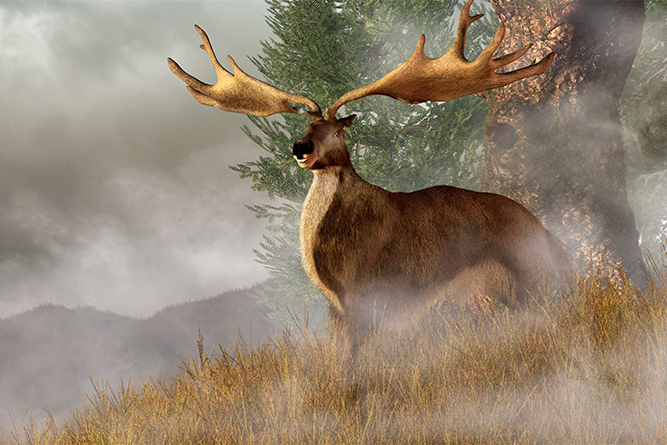The Irish Elk is a captivating species that once graced our planet with its presence. With massive antlers and a majestic stature, this ancient giant has left an indelible mark on the annals of natural history.
Table of Contents
Species Data
- Class: Mammalia
- Order: Artiodactyla
- Family: Cervidae
- Scientific Name: Megaloceros giganteus
- Life Span: Approximately 10-12 years
- Height: Up to 2.1 meters (7 feet)
- Weight: Around 400-600 kilograms (880-1,320 pounds)
Description
The Irish Elk, scientifically known as Megaloceros giganteus, was a massive deer species that lived during the Pleistocene epoch. Its most remarkable feature was its colossal antlers, which could span up to 3.6 meters (12 feet) from tip to tip. Despite its name, the Irish Elk was not exclusive to Ireland but had a wide-ranging habitat across Eurasia.
Appearance
This awe-inspiring creature boasted a robust build and towering legs, giving it an imposing presence. Its enormous, elaborately branched antlers were a sight to behold and are among the largest ever recorded in the animal kingdom.
Behavior
While details of its behavior remain speculative, the Irish Elk is believed to have been a herbivore, feeding on a variety of vegetation. It likely lived in herds, similar to modern-day deer species.
Habitat
The Irish Elk inhabited a range of habitats, from open grasslands to wooded areas. Its adaptability to diverse environments contributed to its widespread distribution.
Diet and Nutrition
As herbivores, Irish Elks likely grazed on grasses, shrubs, and other vegetation abundant in their habitats. Their massive size would have required a substantial daily intake of plant matter.
Mating Habits
Mating habits of the Irish Elk remain a subject of scientific conjecture, but it is believed that these creatures may have engaged in seasonal mating rituals.
Mating Behavior
- Reproduction Season: Possibly during specific seasons
- Pregnancy Duration: Estimated to be around 240-260 days
- Baby Carrying: Female Irish Elks likely cared for their young
- Independent Age: Calves would have become independent after several months
- Female Name: Cow
- Male Name: Bull
- Baby Name: Calf
5 Fun Facts for Kids
- Despite its name, the Irish Elk was not exclusively found in Ireland.
- Their colossal antlers were among the largest ever recorded in the animal kingdom.
- The Irish Elk lived during the Pleistocene epoch, alongside other iconic megafauna.
- These giant herbivores likely played a significant role in shaping the prehistoric ecosystems they inhabited.
- Although extinct today, the Irish Elk continues to captivate the imaginations of paleontologists and wildlife enthusiasts alike.


